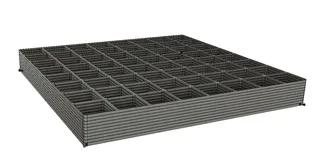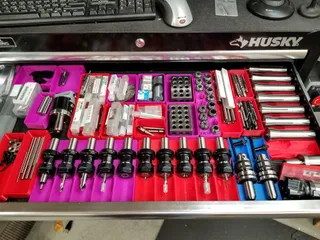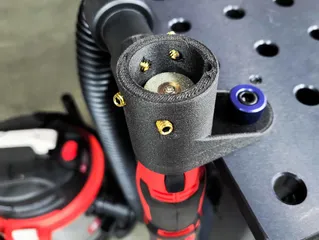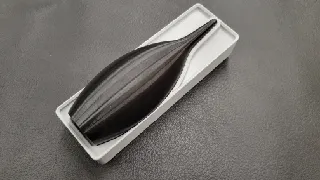Raspberry Pi 7" Touch Screen Console Stand Case
Description
PDFThis case holds a Raspberry Pi (2 or 3) and the official 7" touch screen display in a convenient desktop-console format. I designed this for a video switching system, but it's perfect for any kind of control screen, status display, photo frame or any other small desktop device.
The case provides full access to the network and USB ports and it is possible to swap out the SD card, though you may need tweezers or needle-nose pliers to reach it easily. The flex ribbon will block the SD card slot, unless you get a longer flex ribbon and fold it as shown in the photos. Don't try to fold the ribbon that comes with the display. It's too delicate.
Note that you will also need a right-angle power cable to supply power to the Raspberry Pi. Power can then be supplied to the touch screen from the Raspberry Pi GPIO pins using the jumpers that came with the display.
Here are the components I used:
*This site contains affiliate links for which I may be compensated
- Raspberry Pi 3 (CanaKit with power supply): http://amzn.to/293362J
- Official Raspberry Pi 7" Touch Screen: http://amzn.to/28UAYuL
- 32GB SanDisk Ultra Micro SD Card: http://amzn.to/28UB9WY
- Right-angle micro USB power extension: http://amzn.to/28Z98lE
To assemble the case, you will also need:
- M3x10 flat head screws (4) to attach the stand to the bezel
- M3x5 button head screws (4) to attach the bezel to the screen
- Adhesive rubber feet (4) to keep the case from sliding around
Do not attempt to use screws longer than 5mm to attach the bezel to the display, or they will penetrate and damage the screen.
Print Settings
Printer:
MakerFarm Prusa i3v
Rafts:
Doesn't Matter
Supports:
Yes
Resolution:
.2mm
Infill:
40%
Notes:
I recommend PETG for these parts because it stays flatter and will fit the display better. You can also use ABS, but be aware that these are large parts and they may not fit well if they warp during printing.
The prints shown in the photos were done with eSun PETG Black: http://amzn.to/28WixL0
Post-Printing
Assembly
Attach the stand to the bezel using four (4) M3x10 flat-head screws. You may wish to tap the holes in the stand so the screws are easier to install. Orient the stand so that the cutout for the display flex cables is toward the bottom. The tab on the stand will cover the opening in the bezel.
Mount the Raspberry Pi to the display with the GPIO pins facing out and the display flex connectors on the same end.
Mount the assembled case onto the back of the display/Pi assembly using four (4) M3x5 screws. DO NOT USE SCREWS LONGER THAN 5mm. Longer screws will damage the display. If you only have 6mm screws, use a couple of washers to keep them from overpenetrating.
Route a 90 degree right angle micro USB extension cable through the opening in the side of the stand and to the Raspberry Pi. Use a small zip tie to anchor the power cable in the slots provided (see photos).
Attach four rubber feet to the bottom in the recesses provided.
How I Designed This
Editable Models
I designed this thing using Fusion 360. Editable project files can be found here:
Custom Section
Alternate Versions
Two versions of the stand are provided:
- One with no additional connector openings
- One with an opening for a DB9 serial connector. I used this to control an RS-232 device using this level shifter: http://amzn.to/28W8Igf
Category: Electronics
Tags
Model origin
The author marked this model as their own original creation. Imported from Thingiverse.




